Rich results, structured data and Schema: a visual guide to help you understand
A recipe to impress your dinner guests, a step-by-step guide to changing your tire, or the opening hours of the store around the corner. You might have noticed that Google is stepping its game up with the way it’s displaying the results to your search queries. These prominent and often visual answers to your search query are called rich results and they’re powered by a thing called Schema.
But how do search engines create these kinds of results? What does structured data have to do with it? And, how do you get them for your website? Find out all about it here!

Table of contents

Rich results, structured data and Schema

Adding structured data to your site


How and why was Schema invented?

Rich results come in different forms. Recipes displayed with an image, the ingredients needed, and even a rating. But also the first few steps to changing your tire or the opening hours of the store you want to visit. Perhaps you’ll recognize some of these examples:
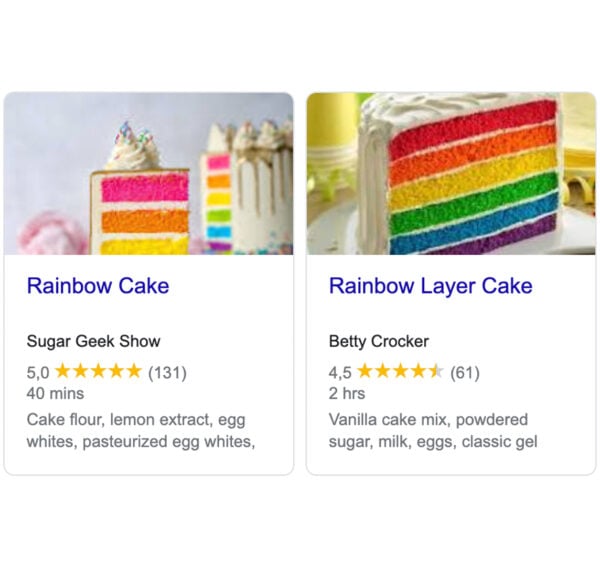
Recipes
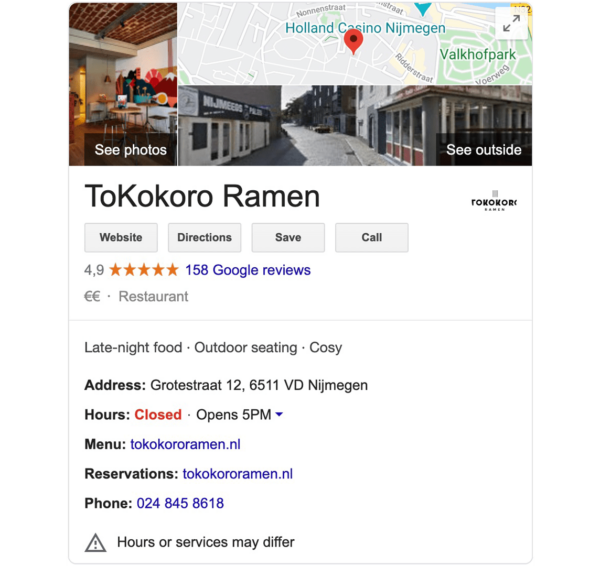
Business listings

Products with rating
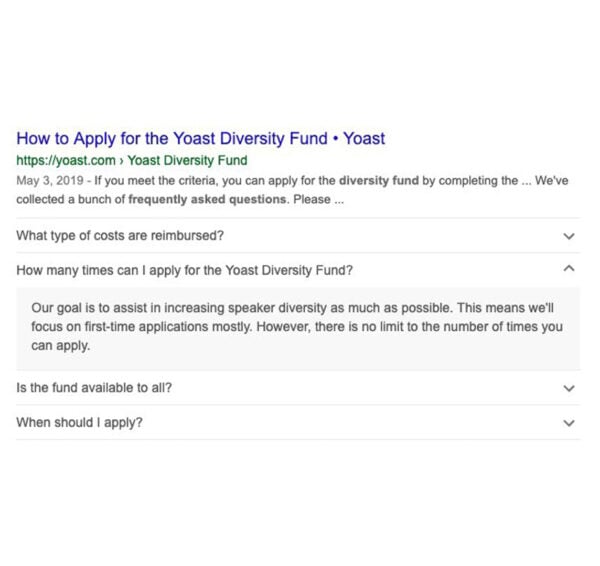
FAQs

Knowledge graphs
What are rich results?
As you can see from the examples above, rich results tend to stand out from the ordinary blue links you find in Google. They often show images or just those specifications or details people are looking for. Which also explains why they have a higher click-through rate than ordinary, less prominent results. But how can you make sure your content shows up as a rich result? How do you get your very own rich results?

Here, we’ll explain how Google creates these rich results and how you can increase your own chances to be featured like that as well! And to guide you through this journey, we’ve asked someone special to join us. Meet the man, the myth: Rich Snippet!
Hi there! The name’s Rich. I’ll be helping you make sense of what Schema is, what it does and how you can get your very own rich results. We will take it one step at a time to make sure it doesn’t get overwhelming! Okay, let’s kick off our journey with a fun pop quiz to get the juices flowing. Are you ready?

Which of these are Schema powered rich results on Google?
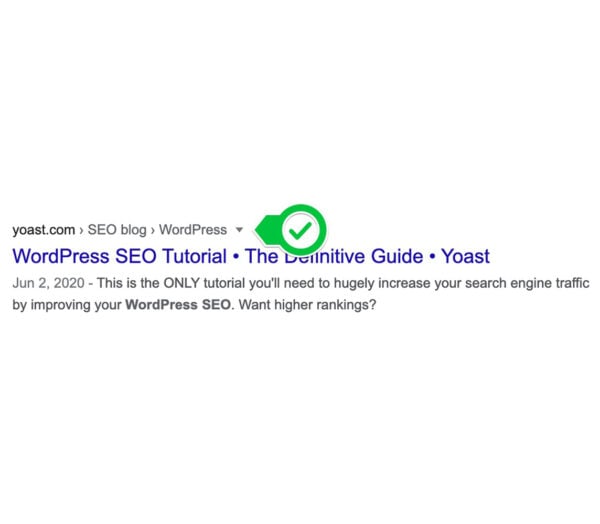
Breadcrumbs
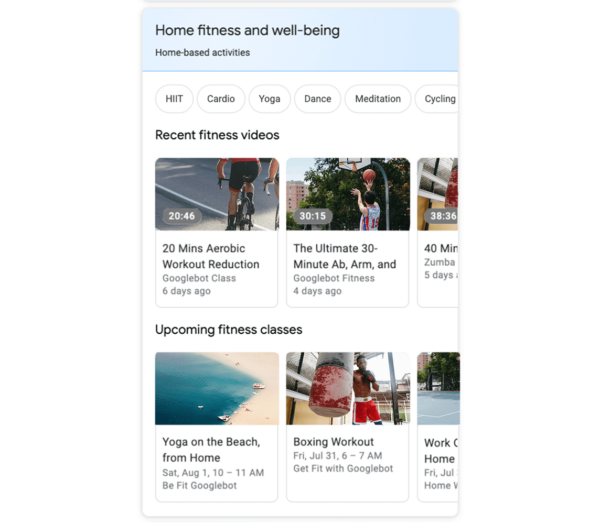
Home activities

Sports scores
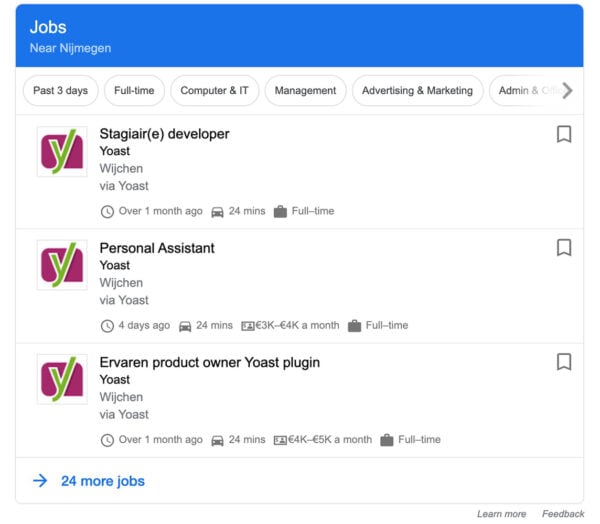
Job postings

Flights
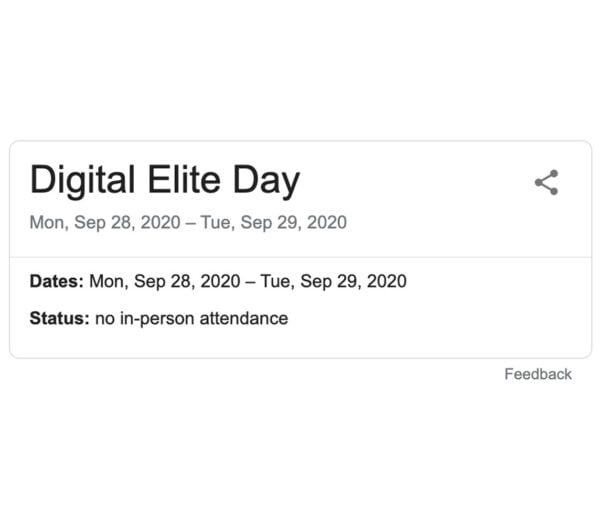
Events

Movies
Let’s start by answering the following question: how does Google get all this information on cooking time, ratings, stocks, etc? Much of the input for this comes from structured data. By adding structured data to your page you’re describing your page in a way that makes it easier to understand for search engines. To do so, you need to add code in a standard vocabulary and that’s where Schema.org comes in.
Schema is the vocabulary used by the most common search engines and it describes the contents of your page such as products, reviews, job postings, recipes, business listings and so on. By using structured data, and presenting it through Schema, your pages become more readable for machines such as search engines. This allows them to interpret your pages and present your content as rich results.

This explains how structured data works in a nutshell. But the whole thing may still feel a bit abstract to you. So, let’s break it down. How do structured data, schema and rich results tie in together?
Schema
Schema is a shared language created by several big search engines, containing a standard markup for structured data these search engines are able to understand. On Schema.org, you can find what you need to describe your pages and find examples of how to add your own structured data to a page!

Structured data
Where Schema is the language in which you present your content, structured data is the actual data you provide. It describes the content on your page and what actions site visitors can perform with this content. This is the input you give search engines to get a better understanding of your pages.

Rich results
By providing structured data using Schema, search engines will know exactly what users can find on your page — and what it all means. This allows them to present your content in a more prominent, visual way in the search results. These more prominent results are called rich results, or rich snippets.

Let’s take a quick sidestep to dive deeper into what Google exactly does to get information about your pages. If you’re familiar with SEO, you might already know that search engines like Google follow links. They follow links to get from one page to another. And they do this by using crawlers, also known as bots or robots. Although these are digital, you can think of them as little creatures crawling along your pages to find out what kind of content you have on your pages.
These crawlers visit your site from time to time to get the latest version of your pages and save these in a huge database called the index. Depending on the traffic on your site and the number of changes you make to your content, these crawlers come around more or less often. Google uses this index and different algorithms to determine what pages they want to show when someone types in a search query.
So, what role does structured data play in all this? Although Google is getting much better at understanding what sorts of content are out there, it can still use some help determining what every individual page can offer visitors. Plus, it wants to look for meaning on the web. By adding structured data to your pages, Google is able to read this data and understand your content even better. This helps Google determine what people can expect to find on your page and which search queries are a good fit for your page.


Are you still with us? Essentially, what Google does is visit your site from time to time to know what content you’re offering. This helps them decide whether or not you’re the best result to show when someone searches for something online.
Structured data can help you be that best result by being even more detailed about what people can find on your page! In addition, you validate in your code what you do on your pages. Now, Google has an extra way of making sure that you are what you say you are.
What does structured data look like?
This is a simple example of how you’d describe an article on a webpage with Schema in JSON-LD. You can extend this and go into as many details as you like — just make sure it’s relevant for search engines. And, very important, make sure the code is valid!
<script type="application/ld+json">
{
"@context": "https://schema.org",
"@type": "Article",
"mainEntityOfPage": {
"@type": "WebPage",
"@id": "https://yoast.com/"
},
"headline": "WordPress SEO: The definitive guide",
"image":
"https://yoast.com/wordpress_seo_definitive_guide.png",
"datePublished": "2020-02-05T08:00:00+08:00",
"dateModified": "2020-02-05T09:20:00+08:00",
"author": {
"@type": "Person",
"name": "Joost de Valk"
},
"publisher": {
"@type": "Organization",
"name": "Yoast",
"logo": {
"@type": "ImageObject",
"url": "https://yoast.com/yoast_logo.png"
}
}
}
</script>
How can I add structured data to my own site?
We’ve explained what structured data is, what role Schema plays in this and how they can help you get those rich results. That brings us to the question on everyone’s mind: How can I add structured data to my own site? There are two options you can consider:

Implementing the code yourself
- It is possible to add the necessary code to the existing code of your page.
- However, it is important that you have an understanding of developing code and know what you’re doing.
- Also, remember to keep up with changing Schema recommendations and make the necessary changes to your code.

Using third party tools
- You can use tools, such as plugins or third-party services, that add structured data for you.
- An advantage is that you don’t have to be a developer to do this and these tools will help you stay up to date.
- It is important to note that using a third-party tool makes you less flexible when it comes to making changes in your structured data.
As we’re getting to know each other during this journey, there is something I have to mention. Yes, structured data is the way to go when you want to stand out like me. When you want to have your own rich results. But, although using structured data highly increases your chances of being shown as a rich result, it is not a guarantee. Google ultimately decides whether you get a rich result. Don’t forget, make sure your content is top-notch! But I don’t expect that to be a problem with you.

Yoast and Schema

Schema in Yoast SEO
One of the plugins that can get you sorted when it comes to structured data is our Yoast SEO plugin. By default, our plugin builds a full structured data graph for every page (and post) on your site. This graph tells Google what the different parts on your page mean and how they fit together.




It’s a great way for search engines to make sense of websites. But that’s not all:
Meet our Schema tab
By default, our plugin describes your pages using WebPage schema and your posts using Article schema. In most cases, this is sufficient. But, there are also pages where you might feel the need to further specify what it’s about. For example, in the case of your Contact page or a News article. We’ve added several content types in our Schema tab, where you can select the right one using a dropdown menu!
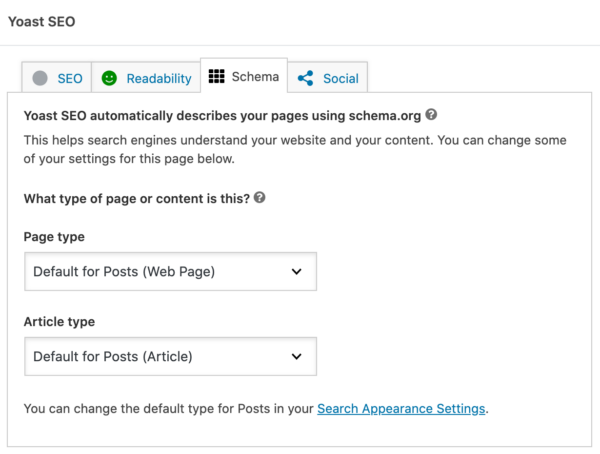

Add structured data with our Yoast SEO blocks
Our plugin offers several structured data blocks that increase your chances of getting a clickable rich result. You can use our How-to block to easily create how-to articles, the FAQ block to build FAQ pages, and add breadcrumbs to your pages with the Breadcrumbs block. By using these blocks you can make sure you’re placing this content — while Yoast SEO automatically generates the correct structured data in the background. Right now, we have three structured data blocks, but there are more on the way!
Learn everything about structured data
We believe that everyone should have an equal chance in the search results. That’s why we’ve created a Structured data for beginners training course, which is completely free of charge! But that’s not all. We also recently launched a new Understanding structure data course, that will help you explore this topic in even more depth. Get access to this new course and all of our other courses with a subscription to Yoast SEO Premium.

Schema in Local SEO
When you run a local business, local SEO can help you become one of the top search results in your area. Our Local SEO plugin helps you by making sure your site is outputting the right local business markup. For example, you can describe your contact information with the address block which also adds valid structured data to your page. Or, you can use the Google Maps structured data block to add a proper map to your site. This helps you add this information essential to your users, while automatically adding structured data to your page in a way that Google will understand.


Schema in WooCommerce
If you’re working on an ecommerce site, our WooCommerce SEO plugin can also help you tackle this structured data. This plugin takes the standard Schema that product pages put out and builds a product graph that makes sense to Google. This way you can increase your chances of your products being shown directly in the search results, including price and all.
Schema in Yoast SEO for Shopify
More and more users are using Shopify to build their online stores. Shopify does output a bit of structured data and some themes in Shopify as well, but most of it is only for products and is not that sophisticated. Yoast SEO for Shopify automatically outputs the Schema to higher your chance of rich results showing your rating, stock, images, social profiles, organization name, and logo. All out-of-the-box.

How and why was Schema invented?
The history of Schema dates back to the creation of the web, back in 1989. In that year, Tim Berners-Lee wrote a proposal for a web of links to prevent loss of information at CERN.
The idea of an open web was born and this web of links eventually grew to an extensive and complex network used by people all over the world – the world wide web.
While the web became bigger, Berners-Lee introduced the concept of a semantic web. A web on which machines are able to read and understand all the information that can be found online – and to connect this knowledge.
Schema eventually came into existence as a building block for the semantic web, as this is a great tool in making information understandable and readable for machines such as search engines.
Structured data has been around for years, but we believe the best is yet to come! Want to continue reading? Check out our ultimate guide to structured data with Schema.org.
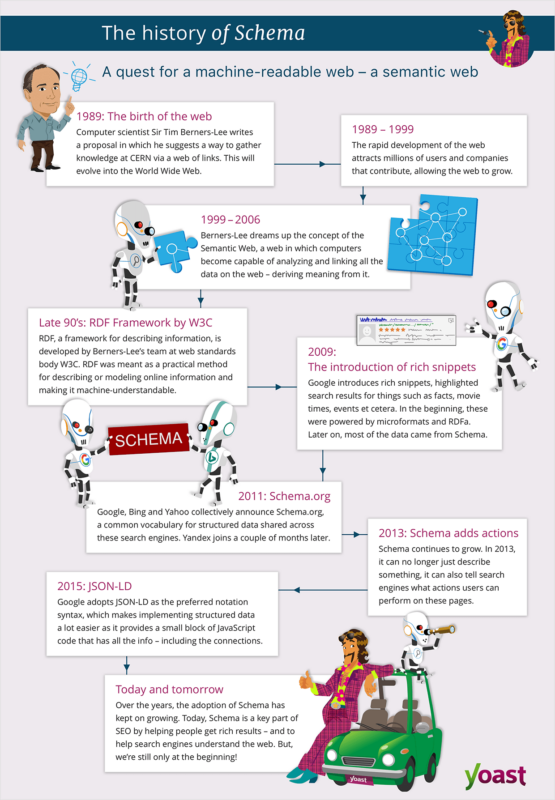
That was a quick journey into the world of Schema

We hope you enjoyed this story and learned a bit about the why and how of structured data. Before we go, Rich Snippet would like to have the last word – as always:
As you’ve noticed structured data is quite the thing! It’s almost as cool as my shirt, right? Nah, just kidding. Structured data helps search engines make sense of the world and that helps them make the search results look more appealing. These rich results help users quickly find what they are looking for. Also, these can help you get the clicks you need – or, you might simply view them as a validation of the hard work you are doing. Whatever your strategy is, keep it up!
